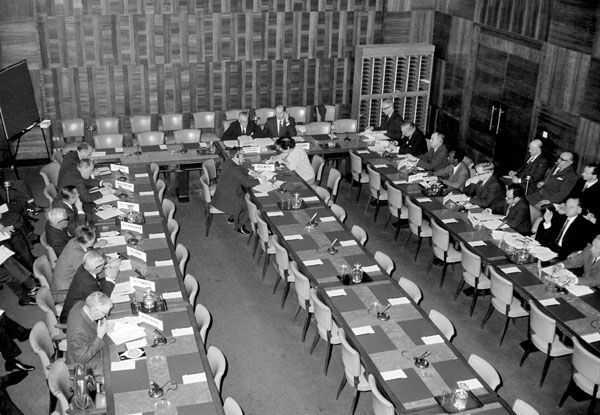The Book of Mormon is published in Palmyra, New York.
“The Book of Mormon” is a sacred text in the religious tradition of Mormonism, also known as the Church of Jesus Christ of Latter-day Saints (LDS Church). It is considered scripture alongside the Bible by members of the LDS Church and is believed by them to be a record of ancient inhabitants of the American continent.
Origins: According to Mormon belief, “The Book of Mormon” was originally written in ancient America by prophets such as Nephi, Mormon, and Moroni, among others, between approximately 600 BC and 421 AD. The text was said to have been engraved on golden plates and buried by Moroni, who appeared as an angel to Joseph Smith, the founder of Mormonism, in the early 19th century.
Translation: Joseph Smith claimed to have been directed by an angel named Moroni to a hill near his home in upstate New York where he found the golden plates buried. With the aid of seer stones, he translated the text into English, producing “The Book of Mormon” in 1830.
Content: “The Book of Mormon” is divided into several books, each purportedly written by different ancient prophets. It tells the story of two major civilizations, the Nephites and the Lamanites, who descended from a group that left Jerusalem in 600 BC. The narrative covers their religious beliefs, wars, migrations, and interactions with God. The central figure in the book is Jesus Christ, who, according to the narrative, visited the Americas after his resurrection.
Doctrines: Doctrinally, “The Book of Mormon” teaches many principles similar to mainstream Christianity, such as faith in Jesus Christ, repentance, baptism, and the gift of the Holy Ghost. It also contains unique teachings such as the concept of eternal progression and the belief that the Americas were inhabited by ancient Israelites.
Importance: For members of the LDS Church, “The Book of Mormon” holds significant spiritual and doctrinal importance. It is considered by them to be a companion scripture to the Bible and is used alongside it in religious study and worship. The book is believed to contain the fulness of the gospel of Jesus Christ.
Distribution and Influence: “The Book of Mormon” has been translated into numerous languages and distributed worldwide by the LDS Church. It has had a profound impact on the lives of millions of adherents and has also been a subject of study and curiosity for scholars, historians, and religious seekers outside of the Mormon faith.



